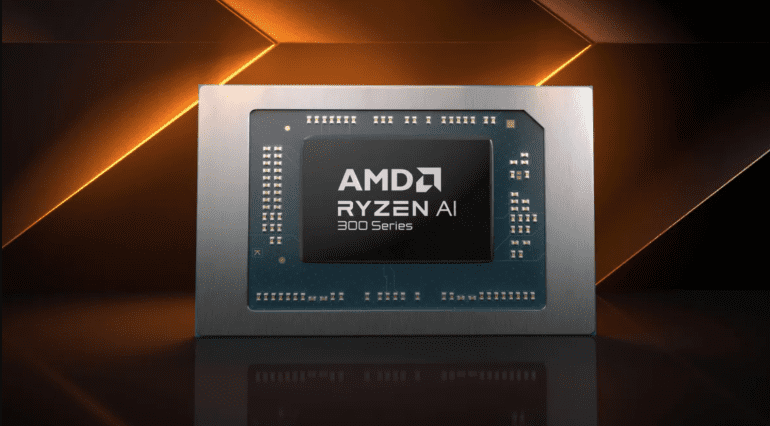- AMD introduces Ryzen AI, featuring third-gen NPUs with up to 50 TOPS
- Ryzen AI 300 series succeeds Ryzen 8000, offering enhanced NPU bandwidth
- Asus leads the laptop lineup with Ryzen AI processors, promising superior performance and portability
- Ryzen AI CPUs blend 4nm Zen 5 cores with 3nm Zen 5c cores for optimal performance and efficiency
- Radeon 890M and 880M GPUs bring incremental improvements over previous generations
- AMD also launches Ryzen 9000 X series desktop processors with Zen 5 architecture and advanced connectivity options
Main AI News:
AMD’s innovation trajectory continues to impress as it unveils its latest generation of mobile CPUs, now branded as Ryzen AI. With the promise of up to 50 TOPS (Trillions of Operations Per Second) in neural processing power, these processors mark a significant leap forward in AI acceleration technology. The new CPUs, built on the third-gen Neural Processing Unit architecture dubbed XDNA 2, are integrated with upgraded CPU cores using the cutting-edge Zen 5 process. Alongside, there’s an enhanced integrated GPU, RDNA 3.5, offering a comprehensive solution for modern computing needs.
Formerly known as Strix Point, the Ryzen AI 300 series represents a generational shift from its predecessors, the Ryzen 8000 series. This upgrade isn’t just about nominal improvements; it’s about delivering tangible advancements in performance and efficiency. The older chips, lacking the NPU bandwidth of the 300 series, will continue under their existing nomenclature.
The launch of Ryzen AI comes with a lineup of laptops from key partners, signaling a robust ecosystem ready to leverage the power of these new processors. Asus leads the charge with a diverse range of offerings across various product lines. From the performance-driven ROG Zephyrus G16 to the versatile Zenbook S 16, each device promises a seamless blend of power and portability. Moreover, with the inclusion of Nvidia GPUs in select models, users can expect a heightened level of graphical performance.
But the Ryzen AI isn’t just about raw processing power; it’s about adaptability and versatility. The chips are designed to cater to a spectrum of laptop configurations, ranging from ultralights to thin-and-lights, with power draws spanning from 15 watts to 54 watts. This flexibility opens doors for manufacturers to craft devices tailored to specific use cases, without compromising on performance or efficiency.
One of the most intriguing aspects of the new CPUs is the incorporation of both 4nm Zen 5 cores and 3nm Zen 5c cores. While AMD hasn’t divulged detailed insights into this architectural choice, it signals a strategic approach towards balancing performance and power efficiency. By blending different core types, AMD aims to deliver optimal performance across diverse workloads, ensuring an exceptional user experience.
Additionally, AMD hasn’t neglected the GPU front. The Radeon 890M and 880M integrated GPUs bring incremental improvements over their predecessors, with the 890M boasting an increased number of compute units, elevating graphical performance to new heights.
In a market where AI capabilities are becoming increasingly essential, AMD’s Ryzen AI stands out as a formidable contender. With its robust NPU, versatile architecture, and enhanced GPU capabilities, it’s poised to redefine the mobile computing landscape.
And that’s not all. AMD’s innovation extends beyond the realm of mobile computing, with the introduction of Ryzen 9000 X series desktop processors. Built on the Zen 5 architecture, these processors offer unparalleled performance and compatibility, ensuring a seamless transition for both existing and new systems. Coupled with advancements in connectivity and data transfer speeds, courtesy of the X870/X870 chipsets, AMD continues to push the boundaries of what’s possible in the world of computing.
Conclusion:
AMD’s Ryzen AI marks a significant advancement in mobile computing, boasting unparalleled AI acceleration capabilities and enhanced CPU and GPU performance. With a diverse lineup of laptops and desktop processors, AMD is poised to capture a significant market share, offering consumers a compelling alternative in the fiercely competitive computing landscape.

